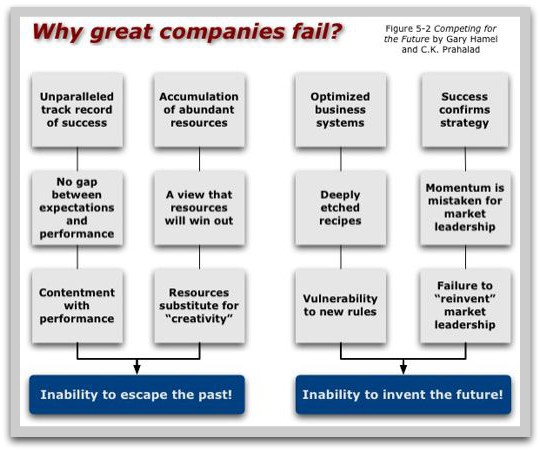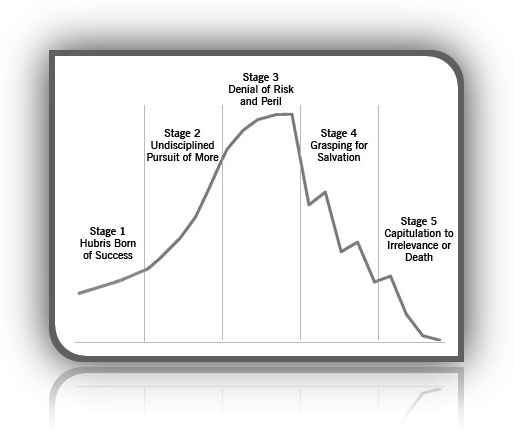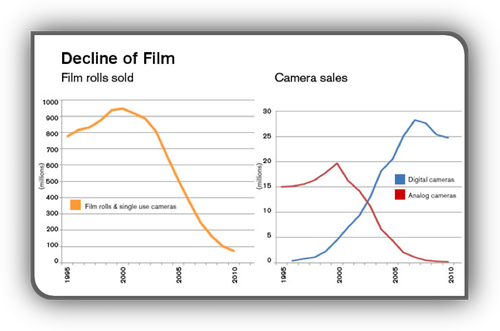Organization efforts ::: Problems or Opportunities?



How could you create a comprehensive action plan or calendarization for each of the implied action areas in this topic and all of them together?
“People in any organization are always attached to the obsolete—the things that should have worked but did not, the things that once were productive and no longer are.”
“Success always obsoletes the very behavior that achieved it” ― PFD
A critical question for leaders is, “When do you stop pouring resources
into things that have achieved their purpose?”
The most dangerous traps for a leader are those near-successes
where everybody says that if you just give it another big push
it will go over the top.
One tries it once. One tries it twice.
One tries it a third time.
But, by then it should be obvious
this will be very hard to do.
So, I always advise my friend Rick Warren,
“Don’t tell me what you’re doing, Rick.
Tell me what you stopped doing.” — Drucker on Leadership
The failed strategy and abandonment
Opportunities the book
Opportunities the concept
(calendarize this?)

Analysis of the entire business and its basic economics always shows it to be in worse disrepair than anyone expected.
The products everyone boasts of turn out to be yesterday’s breadwinners or investments in managerial ego.
Activities to which no one paid much attention turn out to be major cost centers and so expensive as to endanger the competitive position of the company.
What everyone in the business believes to be quality turns out to have little meaning to the customer.
Important and valuable knowledge either is not applied where it could produce results or produces results no one uses.
I know more than one executive who fervently wished at the end of the analysis that he could forget all he had learned and go back to the old days of the “rat race” when “sufficient unto the day was the crisis thereof.”
But precisely because there are so many different areas of importance, the day-by-day method of management is inadequate even in the smallest and simplest business.
Because deterioration is what happens normally—that is, unless somebody counteracts it—there is need for a systematic and purposeful program.
There is need to reduce the almost limitless possible tasks to a manageable number.
There is need to concentrate scarce resources on the greatest opportunities and results.
There is need to do the few right things and do them with excellence.
Managing for Results by Peter Drucker

Broken Washroom Doors: Drucker said the problem of having people in positions where they do the least amount of good exists everywhere, but it is more rampant in hospitals, churches, and other nonprofits than in corporations.
To raise productivity in most any organization managers should regularly assess their key people, their strengths, and the results they achieve.
Then they should ask themselves:
Do we have the right people in the right jobs, where they can make the greatest contributions?
Are the jobs the right ones, meaning do we have people performing tasks that even if achieved do not add value to the organization?
What changes in people, jobs, and job functions can we make that will yield greater results?
Inside Drucker’s Brain

The 90/10 Rule at Yum! Brands
But every analysis of actual allocation of resources and efforts in business that I have ever seen or made showed clearly that the bulk of time, work, attention, and money first goes to ‘problems’ rather than to opportunities, and, secondly, to areas where even extraordinarily successful performance will have minimal impact on results. (calendarize this?)
One of the hardest things for a manager to remember is that of the 1,000 different situations he or she will be asked to deal with on any given day, only the smallest handful have a shot at moving the enterprise forward in a truly significant way (calendarize this?)
The job of management, then, is to make sure that financial capital, technology, and top talent are deployed where most of the results are and where most of the costs aren’t. The temptation often exists, however, to do exactly the opposite

Purpose and Objectives First
To Drucker, strategy, like everything else in management, is a thinking person’s game.
It isn’t arrived at by following some rigid set of rules but by thinking through various aspects of the business.
It all starts with objectives.
 How to guarantee non-performance How to guarantee non-performance
 Management by Objectives — a user's guide Management by Objectives — a user's guide
“Only a clear definition of the mission makes possible clear and realistic business objectives.
It is the foundation for priorities, strategies, plans and work assignments.
It is the starting point for the design of managerial jobs, and, above all, for the design of managerial structures.
Structure follows strategy.
Strategy determines what the key activities are in a given business.
And strategy requires knowing what our business is and what it should be.
Chapters on “What is a Business” and “Business Purpose and Business Mission” in Management: Tasks, Responsibilities, Practices and Chapters 8 and 9 in Management, Revised Edition
Drucker also explained that “nothing may seem simpler or more obvious than to answer what a company’s business is.
A steel mill makes steel, a railroad runs to carry freight and passengers … .
Actually ‘what is our business?’ is almost always a difficult question which can be answered only after hard thinking and studying.
And the right answer is usually anything but obvious.”
Thinking back to Drucker’s Law, no strategy can be created without the customer, for it is the customer who defines business purpose.
And “therefore the question ‘what is our business?’ can be answered only by looking at the business from the outside, from the point of view of the customer and the market.
What the customer sees, thinks, believes and wants at any given time must be accepted by management as an objective fact deserving to be taken as seriously” as any hard data collected from salespeople, accountants, or engineers, contended Drucker.
Drucker claimed that the single most important cause of business failure can be attributed to management’s failure to ask the question “what is our business?” in a “clear and sharp form.”
And it isn’t only when a company is starting out that the question should be asked, or when the company is in trouble.
“On the contrary,” Drucker wrote, “to raise the question and to study it thoroughly is most needed when a business is successful.
For then failure to raise it may result in rapid decline.”
— Inside Drucker's Brain
A product or service name is never an effective answer to these questions because it doesn’t specify the specific contribution to the customer that matches what customers value and pay for — they buy what it does for them. See “The Customer: Joined at the Hip” in The Definitive Drucker and “Changing Values and Characteristics (creating a customer)” in Innovation and Entrepreneurship — bobembry

High tech is living in the nineteenth century, the pre-management world.
They believe that people pay for technology.
They have a romance with technology.
But people don’t pay for technology: they pay for what they get out of technology.
The Frontiers of Management

 Exploiting Success Exploiting Success
 How to guarantee non-performance How to guarantee non-performance
 Management by Objectives — A user’s guide Management by Objectives — A user’s guide
 Thinking in The Definitive Drucker Thinking in The Definitive Drucker

What executives should remember
Victims of success
Abandonment (step one)
Opportunities
Marketing (real marketing)
Innovation (no BS) existing organization requires special efforts
Drucker on Management
Navigating time
(for individuals)
|
![]()
